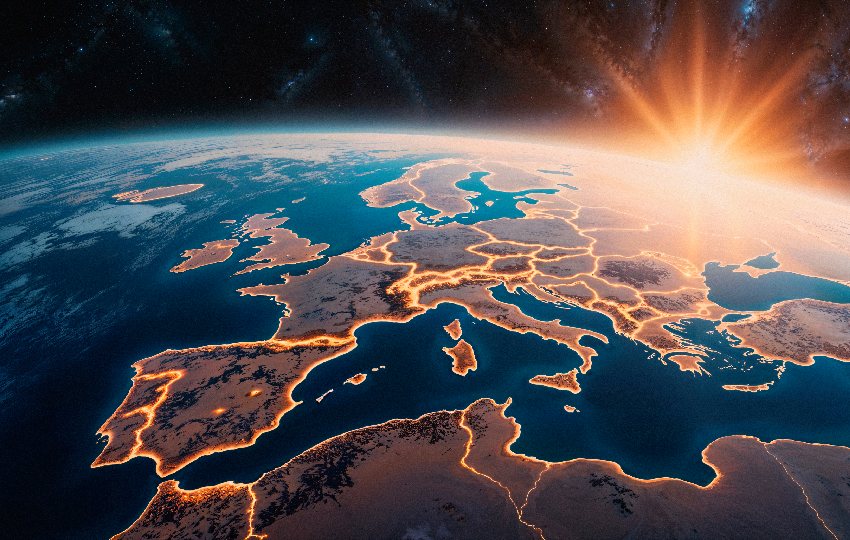The European Green Deal is the EU's brand-new growth strategy to transition the European economy towards a more sustainable model for economic growth. The Green Deal was first introduced in December 2019, along with its overarching objectives. The European Green deal embodies the European aspiration of becoming the first climate-neutral continent by 2050 by having a cleaner environment, affordable energy, smart transport, new jobs, and an overall healthier life.
To achieve the ambitious European Green Deal plan, over €1 trillion EU funds are to be invested through various existing EU funding mechanisms. This green deal finance will support projects and the need for policy changes to reach the EU climate targets, eventually achieving a climate-neutral continent.
What are the sources of the Green Deal Funding?
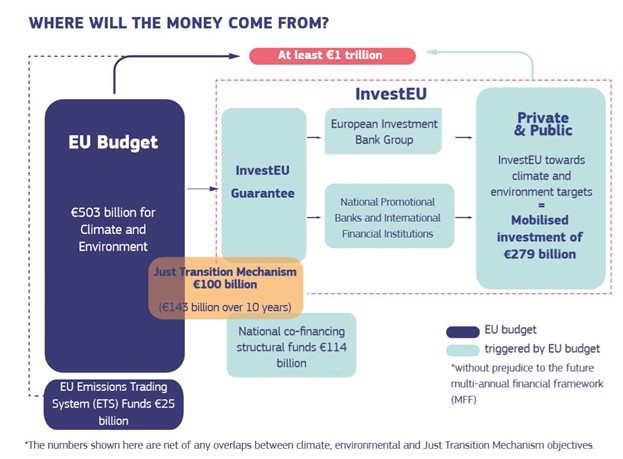
The Green Deal finance is laid out in the EU Green Deal Investment Plan (EGDIP), which will mobilise at least €1 trillion in investments over the next decade. About half of the budget, €528 billion, will come directly from the EU budget. The EU Emissions Trading System (ETS) will trigger a further €114 billion in National co-financing for green projects. At the same time, €279 billion will come from the InvestEU programme, in the form of guarantees, so that European Investment Bank Group and implementing partners to invest in higher-risk projects. Finally, €279 billion will come from the Just Transition Mechanism to focus on the regions and sectors most affected by the transition to a more sustainable future. A central idea of the European Green Deal is that Europe can achieve true sustainability only if it's done equitably and inclusively.
The European Green Deal strategies
Climate Action
Taking actions to limit the consequences of climate change was integral in developing the Green new Deal. Specifically, reducing greenhouse gas emissions has been a long-standing European commitment since the '90s. With the EU Green Deal, Europe has renewed this commitment by aiming to make the continent carbon neutral by 2050.
However, this transition cannot be drastic as it will have devastating consequences. For this reason, the EU Commission has set milestones like the 2030 climate targets that demand a 55% reduction of greenhouse gas emissions compared to the 1990 levels. To make it happen, this comes together with the "Fit for 55" package, which is a suite of legislative initiatives across sectors to revise the current European Climate Law to reflect the climate neutrality objective of the EU Green Deal.
Clean Energy

With 80% of the total greenhouse gas emissions in the EU-27 coming from energy production and consumption, there is a high need to shift towards cleaner energy. The Green Deal scheme wants to reduce energy-related greenhouse gas emissions by utilising green finance to develop more renewable energy sources and create an interconnected digital EU energy market.
There are many ideas and strategies on the table to decouple energy production from burning fossil fuel to make it cleaner. For example, some initiatives encourage investments to increase offshore renewable energy production or promote the use of clean hydrogen to help decarbonise the EU economy.
Buildings and renovations
Buildings consume about 40% of the energy In Europe, and they are responsible for 36% of greenhouse gas emissions. For this reason, European Green Deal seeks to innovate the construction sector to make it cleaner and double renovations rates to create more energy-efficient buildings.
This strategy wants to decarbonise heating and cooling systems, discontinue the usage of the non-efficient building stock, and renovate public buildings like schools and hospitals. Additionally, the EU is reviewing its regulation on the requirements of certain construction materials in the EU Market to make them more environmentally friendly and safer to use.
Sustainable industry
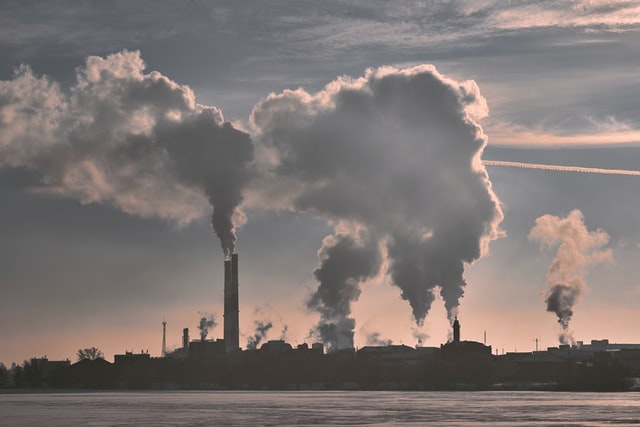
The European industry accounts for about 20% of the European greenhouse gas emissions. As a result, a plan to decarbonise the sector and make it more sustainable could not be missing from the European green deal.
To achieve industry decarbonisation, the EU needed to develop a plan that would focus on all manufacturing stages, starting from the supply of raw materials to marketing sustainable products. For this reason, EU initiatives such as the Circular Economy Action Plan or the European Industrial Strategy are considered to be integral to achieving sustainability in the sector.
The Circular Economy, which is one of the main building blocks of the European Green Deal, wants to change the entire life cycle of products to make them last longer to preserve natural resources. On top of that, circular economy principles demand the further use of recyclables and insist on improving product reusability and reparability. On the other hand, the EU industrial strategy seeks to enhance the digital transformation, use alternative and cleaner energy sources, set recycling targets, or reduce the carbon footprint of the industry.
Sustainable mobility
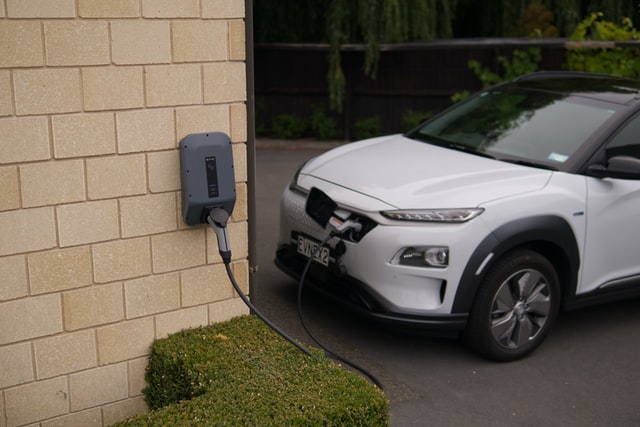
Transport emissions account for about 25% of greenhouse gas emissions in the EU. The European Green Deal strategy for sustainable mobility seeks to radically reduce those emissions by 90% by 2050 through smart, accessible and affordable vehicles. More sustainable transport means will reduce traffic jams and less overall pollution in urban areas.
Green Deal grants for sustainable mobility will be busy in the following years as the EU has set ambitious targets for 2030 such as:
- Increasing the circulation of zero-emission cars on European roads,
- Creating a network of 100 climate-neutral and smart cities,
- Doubling the high-speed rail traffic crossing Europe,
- Making scheduled collective travels under 500km carbon-neutral,
- Deploying automated mobility at a larger scale,
- Introducing zero-emission marine vessels.
To achieve these targets, the EU must revise existing regulations like recharging and refuelling stations, the emission standards of new vehicles, and intelligent transport systems. However, a more environmentally friendly mobility system means investments in electric vehicle deployment. In such a case, batteries will become crucial in supporting the new automotive industry. Therefore, sustainable battery supply chains are needed for their entire life-cycle while also covering their recycling and re-use.
Eliminating pollution

Pollution is harmful to our health and our environment. It is also responsible for multiple mental and physical diseases and premature deaths, especially in young and older people. However, it is not only bad for people's health, but it also contributes to biodiversity loss, thus limiting the ability of ecosystems to provide their critical services.
With the adoption of the Zero Pollution Action Plan, a key deliverable of the European Green Deal, the EU is more prepared than ever to fight against pollution. This action is further divided into three headline actions to eliminate pollution. First is the Chemical strategy for sustainability to better protect citizens and the environment against hazardous chemicals. Second, the Zero pollution actional for water, air and soil to prevent, remedy, monitor and report on pollution. Finally, a Revision of measures to address pollution from large industrial installations to ensure they are consistent with climate, energy and circular economy policies to achieve the EU Green Deal vision.
Farm to Fork

Our food is responsible for about 21-37% of greenhouse gas emissions and requires many resources to be produced. The Farm to Fork strategy is core to the European Green Deal as it aims at making food systems fair, healthier and more sustainable. To achieve this, Farm to Fork will focus on changing our attitudes and ways of doing things related to food production or consumption. The core objectives of this strategy are to eliminate food loss and waste, to produce, process, distribute, and consume food more sustainably. Sustainable food systems will bring new opportunities for all actors across the food value chain will benefit all stakeholders.
The Green Deal funding of €10 billion proposed for this strategy will open many opportunities for research and innovation in the sector. Namely, on food, the bio-economy, natural resources, agriculture, fisheries, aquaculture and the environment, digital technologies and nature-based solutions for agri-food.
Protection of biodiversity
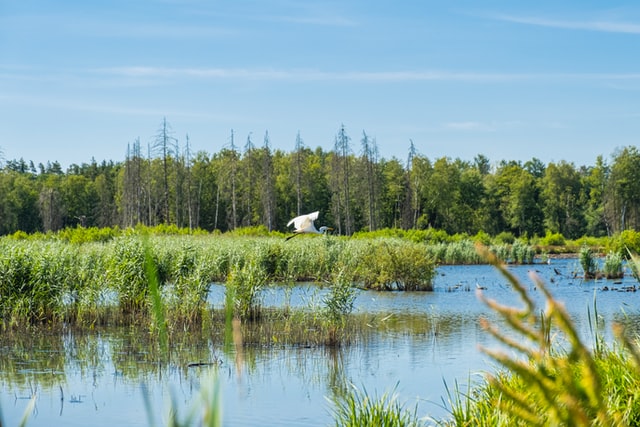
The way we use our natural resources for economic growth is not sustainable, and it harms the world's biodiversity. It is estimated that in the last 40 years, the world lost approximately 60% of its total biodiversity due to human activity. Biodiversity loss is intrinsically linked with climate change as extreme weather phenomena accelerate the natural world's destruction. It is urgent to protect biodiversity and nature as they can be vital allies in our fight against climate change. For example, nature acts as a regulator of climate and help remove emissions from the atmosphere.
As a first step, the Biodiversity strategy for 2030 will help realise the EU Green Deal through biodiversity recovery by 2030. It will seek to make our societies more resilient to threats such as climate change, forest fires, food insecurity and disease outbreaks. The actions planned for biodiversity recovery are establishing a network of protected areas on land and at sea, launching an EU nature restoration plan to restore degraded ecosystems, introducing funding for biodiversity and a better governance framework, and launching measures to tackle the global biodiversity challenge.
Research and development
Each component of the EU Green Deal is based on research and development. Many of the European Green Deal's projects necessitate the use of new technology and the transformation of financial and supply chains. Horizon Europe, which has committed nearly 35% of its €95.5 billion budget to attaining EU climate goals, will fund many research and development programs. Horizon Europe will focus on critical areas such as batteries, clean hydrogen, low-carbon steel, the built environment, and biodiversity through forming green collaborations with various industries and member states.


